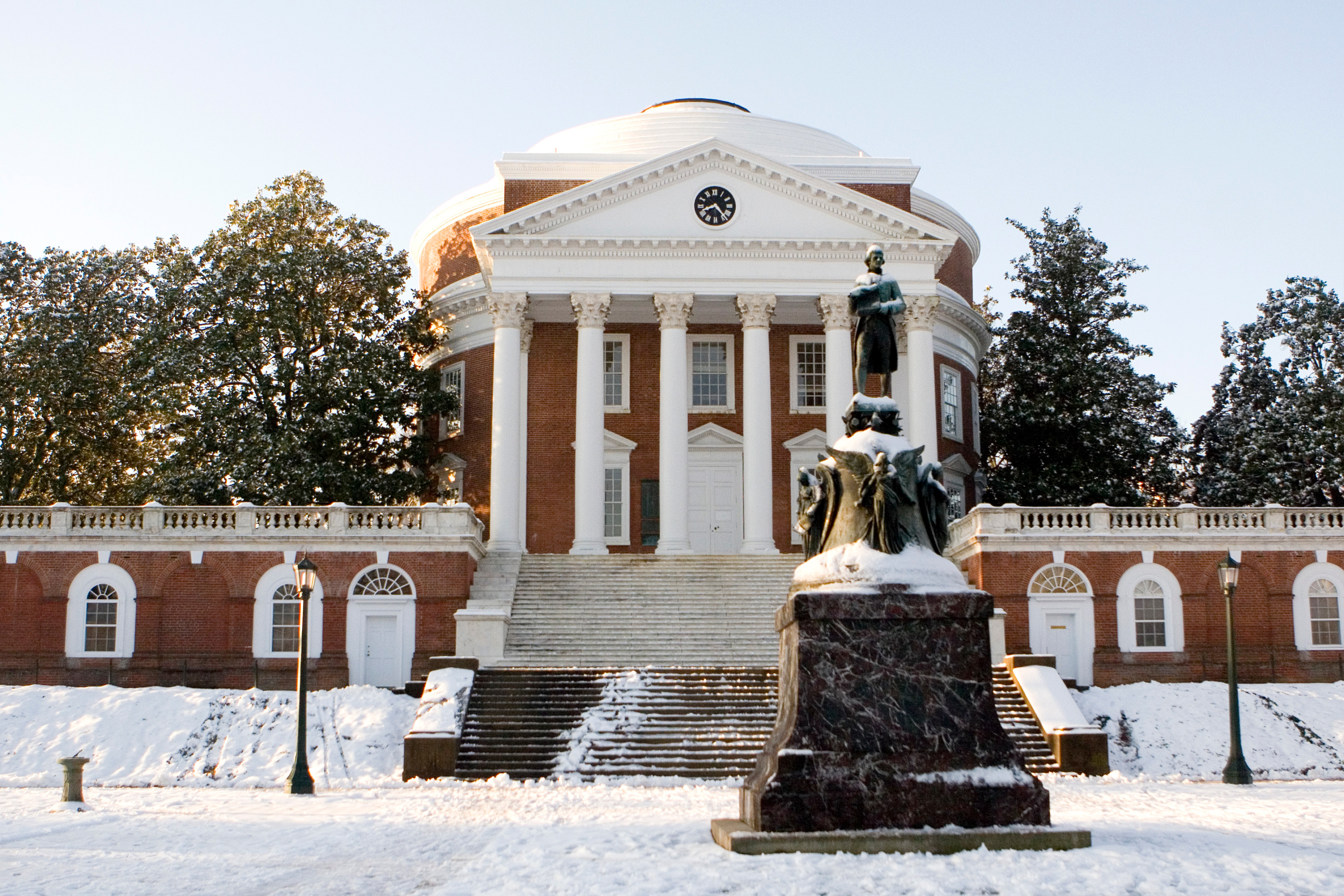A new study of the state’s public higher education institutions underscores the University of Virginia’s ability to deliver a high-quality education while effectively managing resources.
The report, “Review of Academic Spending and Workload at Virginia’s Public Higher Education Institutions,” is one in a series produced by the state Joint Legislative Audit and Review Commission focused on cost efficiency.
The study shows that U.Va. makes significant investment in instructing students; employs productive faculty who are committed to teaching, research and service; and boosts the commonwealth’s goal of graduating more students in key fields such as science and technology.
“The JLARC report provides important context about what universities are doing well and what influences costs,” Executive Vice President and Provost John Simon said. “Our institutional goals include delivering academic excellence, providing affordable access and responsibly managing resources. The successes we’ve had help us enhance our national reputation for efficiency and value to students and their families.”
JLARC examined all of Virginia’s four-year public institutions with a focus on topics including instructional spending; faculty workload and costs; instructional technology; and spending and activity related to research and facilities.
Key findings across the Commonwealth include:
- Increasing student enrollment is a major factor in rising faculty costs, as colleges and universities hire more faculty members to educate more students.
- Teaching loads are consistent with national averages, as faculty have increased time spent on research.
- Academic research adds costs to research institutions, but benefits students and is an economic driver for localities and the Commonwealth.
The report credits U.Va. with investing the most per student on instruction among Virginia public institutions. Instructional spending here is 32 percent higher than the national average among research institutions, a reflection on the emphasis on factors that improve the student experience, such as smaller class sizes.
“This level of instructional spending is one reason that U.Va. is consistently ranked among the leading national universities,” U.Va. President Teresa A. Sullivan said.
U.S. News & World Report ranks U.Va. the No. 23 national university, but also ranks the University No. 55 in terms of financial resources. No national university ranked ahead of U.Va. has a resource ranking of less than No. 37.
“We have achieved national competitiveness, with fewer financial resources than our public and private peers, through efficient and effective use of the support entrusted to us,” Sullivan said.
JLARC’s report notes the rise in faculty costs among state institutions. But it also links those higher costs with enrollment growth and concludes that “faculty salaries do not appear to be an area in which institutions can become significantly more cost efficient.” Rather, the report notes, Virginia’s public universities lag behind state public policy goals for faculty salaries when compared to peer groups.
U.Va.’s Board of Visitors has adopted a goal of improving U.Va.’s average faculty pay to the No. 20 spot among its peer institutions in the Association of American Universities. The multi-year goal is seen as a key to the success of the University’s new five-year strategic plan, as U.Va. faces major generational turnover among faculty in the coming seven years and will rely upon faculty leadership to reach goals centered on academic excellence, student experience, research and leadership development.
JLARC also found that, since 2005, some Virginia institutions have increased their reliance on “contingent” faculty as a means of handling enrollment growth, maintaining consistent faculty workloads and containing costs. Contingent faculty include certain faculty not eligible for tenure and temporary faculty with one-time appointments.
U.Va., however, stands out for decreasing its use of contingents and student teaching assistants. The University’s proportion of them as a percent of total teaching-and-research faculty declined by 6 percent between 2005 and 2012.
The study found that full-time faculty in Virginia work an average of 54 hours a week, which is about the same as reported in 1996. The result tracks national figures and reflects growing responsibilities among faculty for conducting research.
“Popular views that rising average salaries and benefits are influencing increased spending do not appear to hold true among Virginia institutions,” JLARC reports. In fact, declining average salaries – due in part to a five-year freeze on state salaries – helped slow the overall increase in faculty expenditures between 2005 and 2012.
JLARC’s research also found that Virginia’s institutions have increased instruction and enrollment in high-demand fields of science, technology, engineering, math and health – the so-called “STEM-H” fields.
“The state has recently encouraged growth in these more costly STEM-H disciplines and this emphasis on STEM-H will likely continue to increase the cost of instruction,” the report says.
U.Va. plans to increase undergraduate enrollment by 1,673 students between 2011 and 2018, with plans to direct a portion of that into STEM-H fields. The University currently has about 14,900 undergraduate students.
The new report also tracks the growing importance of research at Virginia’s institutions. U.Va., which is classified as one of three “very high research activity” universities in the state, has seen research expenditures increase by 39 percent between 2003 and 2011. As other state schools, U.Va. relies predominantly on federal sources for research funding, but the activity includes unfunded costs including administration and facilities.
“Although academic research costs institutions, it has benefits for students, and it increases employment and economic activity,” the report says. It adds that the commonwealth has strongly supported academic research as a higher-education priority because of its role in knowledge creation, economic advances and its ability to put the state “on the leading edge in the knowledge-driven economy.”
Media Contact
Article Information
December 9, 2013
/content/state-study-examines-academic-cost-factors-public-higher-education

